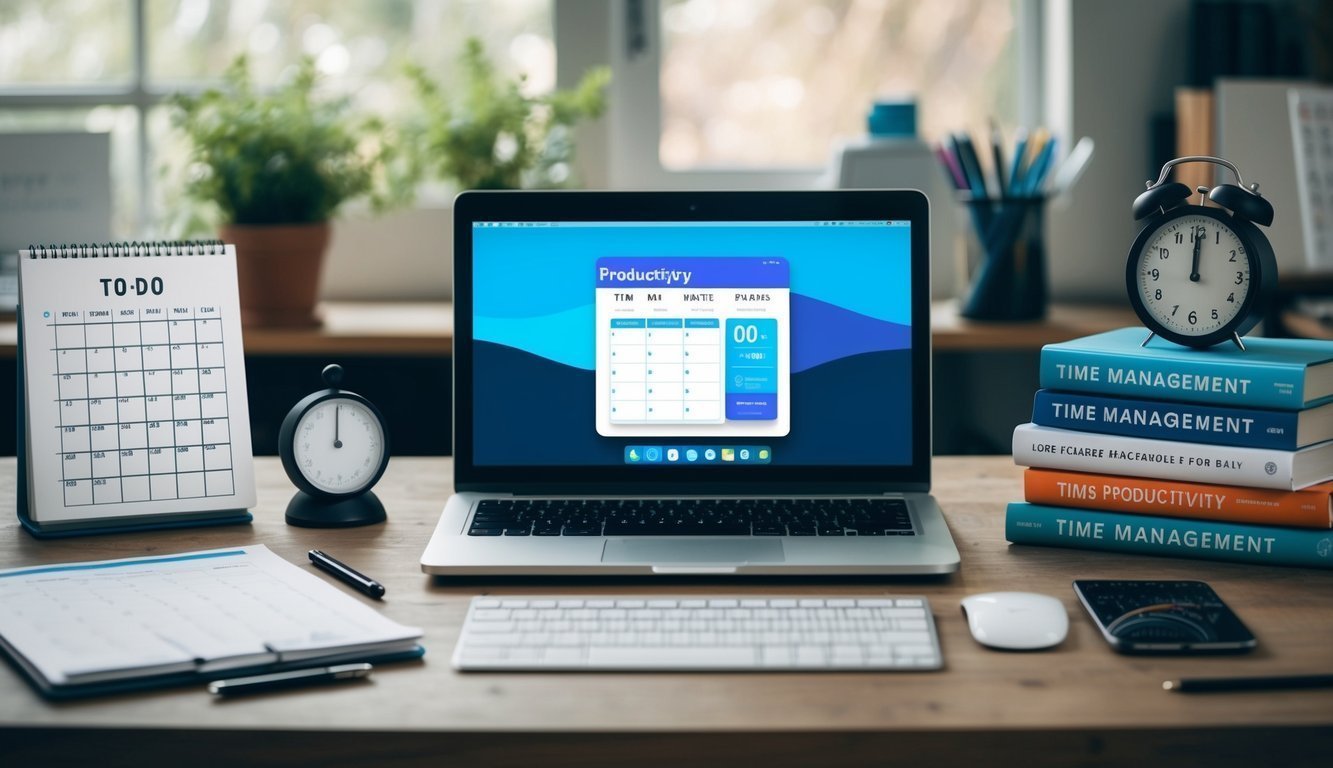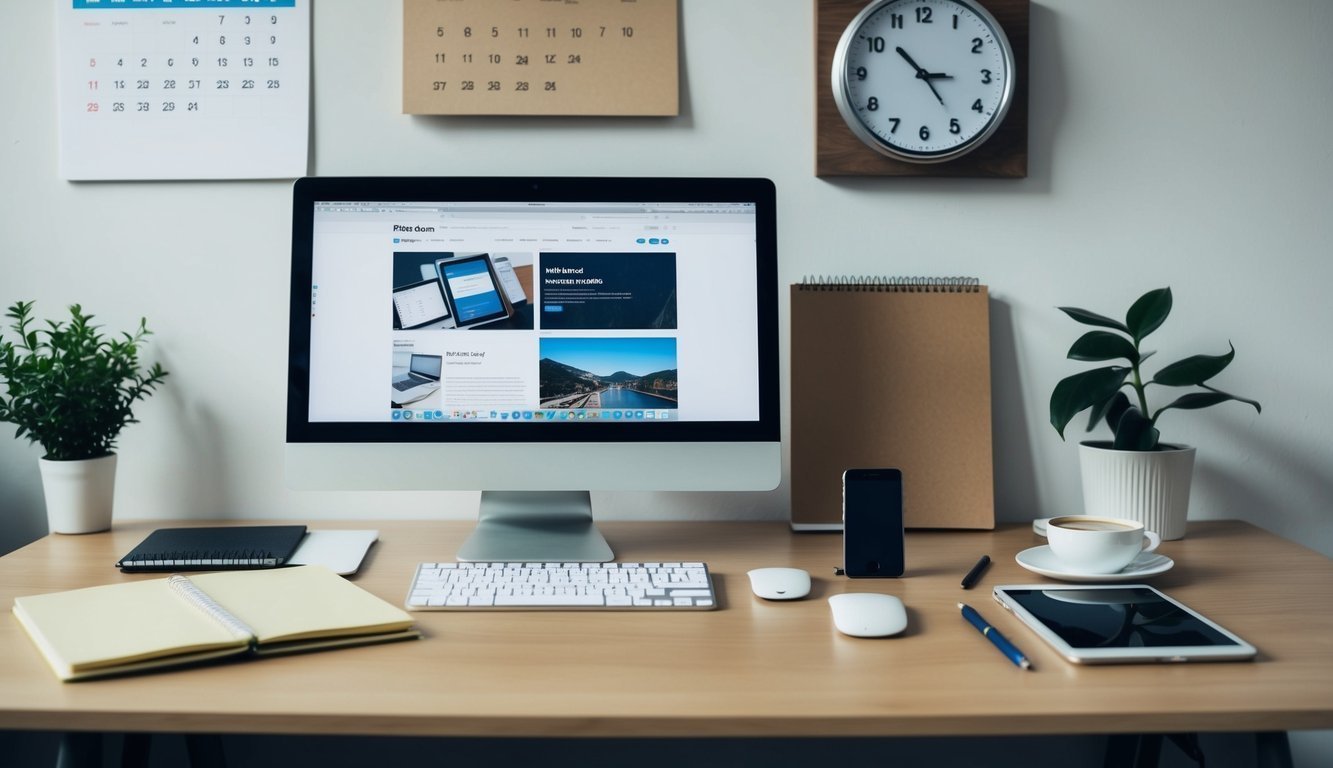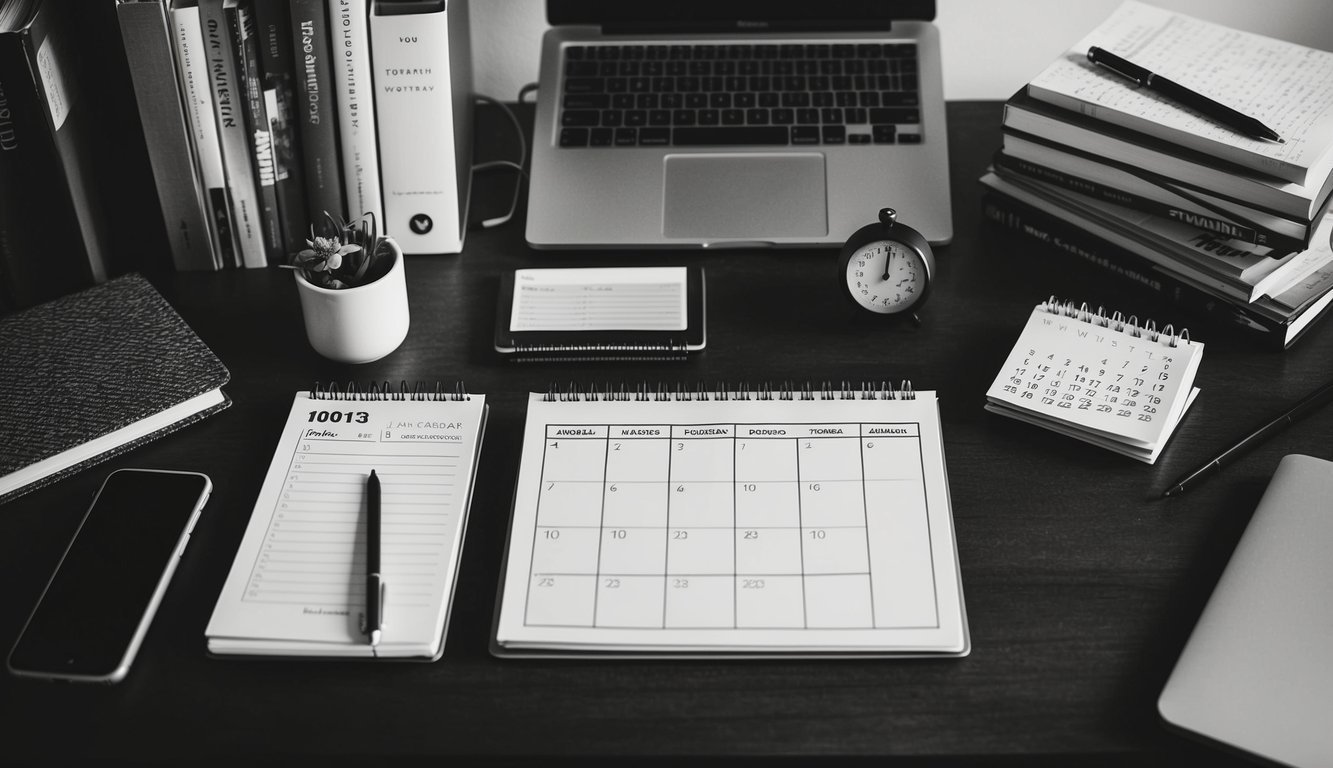PsychNewsDaily Publishers
100 Summit Drive
Burlington, MA, 01803
Telephone: (320) 349-2484
PsychNewsDaily Publishers
100 Summit Drive
Burlington, MA, 01803
Telephone: (320) 349-2484

Productivity refers to how efficiently and effectively tasks are accomplished. It’s about maximizing the use of time, energy, and resources to reach specific goals.
Productivity is assessed by the output achieved relative to inputs such as time and effort. Within psychology, it connects to mental processes and behaviors that propel task fulfillment. Various factors can cause fluctuations in productivity.
To be productive effectively, one should:
Productivity is not merely about putting in more hours but rather working more intelligently. It necessitates balancing work with periods of rest to avoid burnout and sustain long-term performance.
Multiple obstacles can hinder productivity:
These hindrances often originate from psychological roots. Procrastination, for example, might arise from a fear of failure or disinterest in a task, whereas distractions can stem from difficulties in concentrating or a craving for instant rewards.
Tackling these challenges requires a degree of self-awareness and the application of targeted strategies. This could involve employing productivity tools, designing an optimal work environment, or obtaining professional assistance for underlying issues.
The psychology of productivity delves into the mental processes affecting task execution. Motivation is pivotal, as it drives individuals to start and persist with tasks. Intrinsic motivation, stemming from personal enjoyment or interest, often yields higher productivity compared to external rewards.
Concentration and focus are vital elements of productivity. The ability to maintain attention on a single task directly influences the quality and quantity of output. Techniques such as mindfulness can improve concentration and alleviate mental fatigue.
Stress and burnout can significantly diminish productivity. While moderate stress might enhance performance, chronic stress drains energy and willpower. Effectively managing stress through relaxation methods and maintaining a suitable work-life balance is crucial for sustaining productivity over the long haul.
Understanding these psychological aspects equips individuals to craft personalized strategies aimed at boosting their productivity and overall well-being.

Implementing effective productivity strategies can enhance performance and efficiency dramatically. These strategies are designed to optimize task management, time allocation, and focus enhancement.
The “Eat the Frog” strategy advocates addressing the most daunting task first. Named after a Mark Twain quote, this approach helps sidestep procrastination and generates momentum for the day.
“Getting Things Done” (GTD) focuses on capturing, clarifying, and organizing tasks. Created by David Allen, this system aids in clearing the mind by externalizing responsibilities.
“Zen to Done” simplifies the GTD approach by emphasizing habit development, concentrating on one habit at a time for sustainable productivity improvements.
Task batching organizes similar activities together, reducing context switching and promoting more efficient task execution.
Time blocking consists of organizing specific time intervals for tasks or groups of work. This technique fosters a structured day and mitigates decision fatigue.
The Pomodoro Technique employs 25-minute dedicated work sessions interspersed with brief breaks. It aligns with the brain’s natural attention spans to sustain productivity.
“Don’t Break the Chain” motivates daily progress on significant tasks. Users mark off completed days on a calendar, providing a visual encouragement to maintain consistency.
Deep work, as introduced by Cal Newport, means dedicating uninterrupted time to demanding cognitive tasks. This method fosters concentration and results in high-quality output.
Single-tasking, or concentrating on one task at a time, lessens distractions and boosts efficiency, contrasting with multitasking, which can lower productivity.
Prioritization techniques assist in identifying the most critical tasks. Methods such as the Eisenhower Matrix categorize tasks based on urgency and significance, guiding effective time management.

Contemporary productivity heavily relies on digital tools and technological innovations. These resources help streamline workflows, automate tasks, and enhance efficiency across various sectors.
Task management applications have transformed personal and professional organization. Platforms such as Todoist provide comprehensive features for crafting and managing to-do lists, enabling effective task prioritization.
These tools frequently integrate with other productivity software, resulting in a smooth workflow. They deliver reminders, deadlines, and progress tracking, keeping individuals focused and driven.
Many digital productivity tools support collaboration, allowing teams to coordinate efforts and share information more effectively. This facilitates improved communication and decreases the necessity for redundant meetings.
Some apps harness artificial intelligence to propose task prioritization and time management solutions, adapting to unique work patterns and preferences.
Improving productivity frequently involves embracing new technologies and methodologies. Automation tools can complete redundant tasks, allowing individuals to allocate time to more intricate and creative endeavors.
Cloud services provide access to information and projects from any device, fostering flexibility and remote work possibilities. This technology eases collaboration across different locations and time zones.
Keyboard shortcuts and productivity hacks can lead to considerable time savings on routine computer actions. Mastering these techniques can result in significant efficiency gains over time.
Data analysis tools aid in making informed decisions by rapidly processing extensive amounts of information. This technology-driven approach can yield better strategies and outcomes in diverse professional domains.

Formulating effective habits and routines is vital for maximizing personal productivity. By establishing a structured work approach and prioritizing focused time, individuals can enhance output and achieve objectives more effectively.
Consistency is crucial when establishing productive habits. Begin by pinpointing small, actionable tasks that can be easily integrated into daily routines. Set defined goals and track progress to maintain motivation.
Incorporate healthy practices such as regular exercise, balanced nutrition, and sufficient sleep to enhance cognitive function and energy levels. Utilize strategies like habit stacking, where new actions are linked to existing routines to support adoption.
Implement focus-enhancing techniques like the Pomodoro Technique, which consists of working in focused 25-minute intervals followed by brief breaks. This approach helps maintain concentration and mitigate burnout.
Establish a morning routine to kickstart the day positively. This could involve activities like meditation, journaling, or reviewing objectives. Construct a structured workday by arranging tasks according to priorities and energy levels.
Recognize one’s biological prime time – the time when mental sharpness and energy peak. Schedule crucial or complex tasks during this window to maximize efficiency.
Utilize regular work sprints, dedicating uninterrupted time blocks to particular tasks, followed by short breaks to rejuvenate and keep focus throughout the day.
Conclude each day with a reflection and planning session. Assess achievements and prepare a prioritized task list for the next day.
Customize your workspace to enhance productivity. Reduce distractions by establishing a dedicated working environment and using tools like noise-canceling headphones or website blockers.
Experiment with various work styles to discover the most effective approach. Some may thrive on batch processing similar tasks, while others might benefit from alternating different task types.
Include regular breaks and stress-relieving activities throughout the day. This could involve short walks, stretching, or brief mindfulness exercises.
Employ productivity tools and applications to refine workflows and automate repetitive tasks. Continually evaluate and adjust working habits to ensure ongoing effectiveness and alignment with changing objectives.

Evaluating and enhancing productivity revolves around measuring performance, applying effective strategies, and encouraging continuous improvement. These components are vital for individuals and organizations aiming to optimize their output and efficiency.
Measuring productivity necessitates clear, quantifiable criteria. The Pareto principle indicates that 80% of results derive from 20% of inputs, underscoring the need to pinpoint key performance indicators. Time management frameworks, like Getting Things Done (GTD), assist in tracking task completion rates.
Weekly evaluations afford opportunities to review progress and modify strategies. Tracking how often tasks are switched can illustrate the effects of multitasking on overall productivity. Monitoring high focus periods, or “flow states,” can reveal optimal working conditions.
Productivity techniques generally include specific metrics:
Boosting productivity is an ongoing journey that demands regular efforts and adjustments. The “10-minute rule” advocates dedicating brief, concentrated periods to tasks, gradually fostering momentum and efficiency.
Productivity evaluation techniques should be frequently reviewed and refined. This may involve assessing time allocation and pinpointing productivity chokepoints.
It may also encompass trying new tools or methods and seeking input from colleagues or supervisors.
Employing productivity enhancement techniques typically necessitates a blend of technological tools and psychological strategies. For example, DES (Discrete Event Simulation) can be utilized to model and refine complex workflows, while mindfulness practices can assist in maintaining focus and minimizing stress.
“`